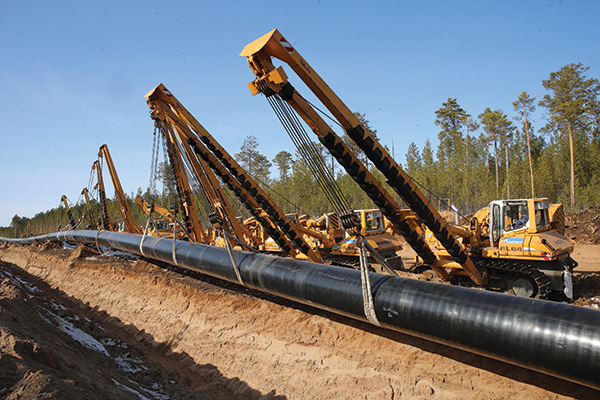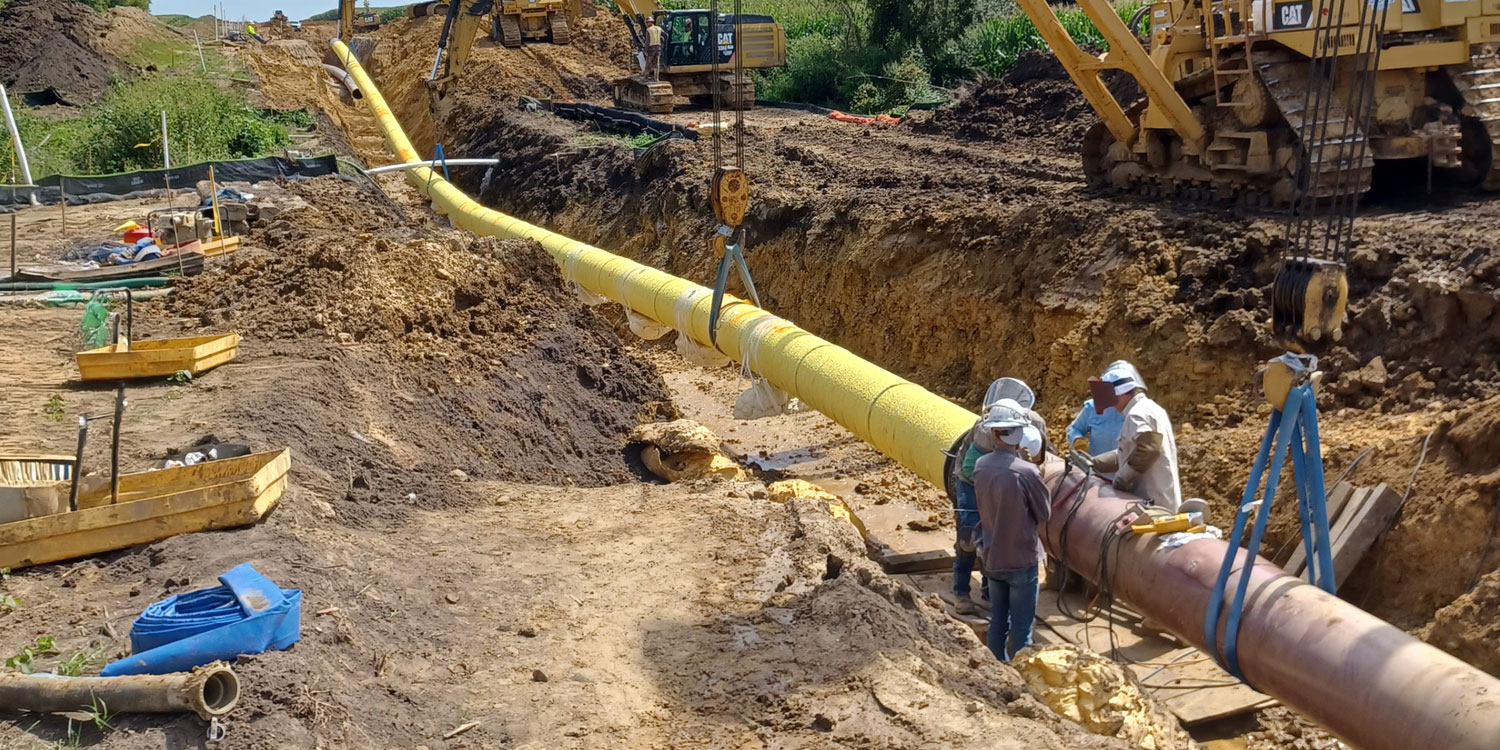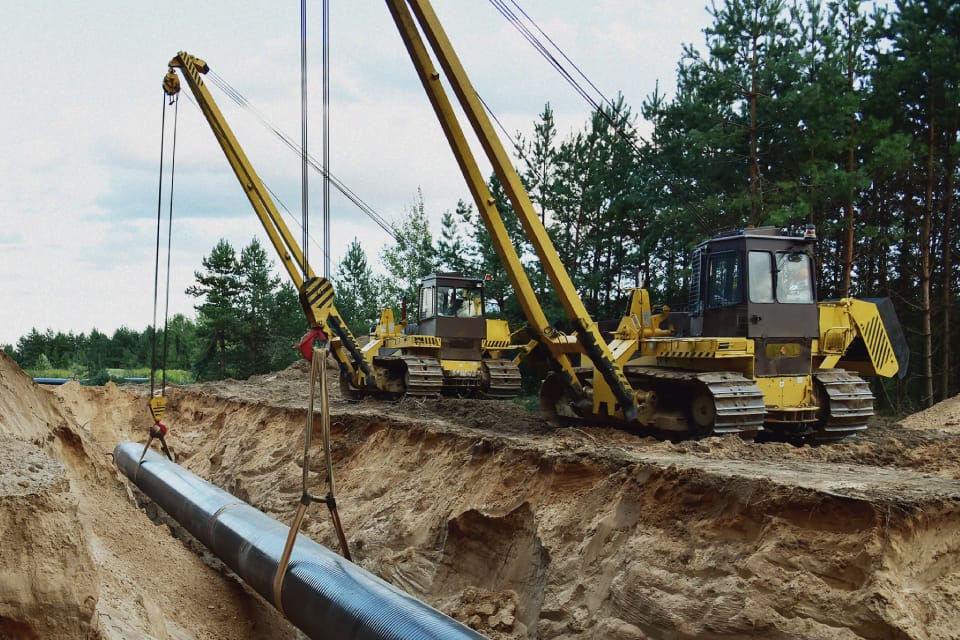Creek Pipe Midland TX: What sets them apart in pipeline integrity
Wiki Article
Recognizing the Key Features of Pipeline Solutions and Their Influence On Performance
Pipeline services play a vital duty in numerous sectors, influencing functional effectiveness noticeably. Key functions, such as sophisticated surveillance modern technologies and maintenance techniques, are crucial for reducing downtime. Additionally, governing conformity warranties security and ecological protection. Nonetheless, the interaction in between style, framework, and financial variables can complicate these procedures. Comprehending just how these elements effect general effectiveness raises vital concerns about best methods and future advancements in the field.The Duty of Modern Technology in Pipeline Monitoring
As innovations in modern technology remain to progress, the value of reliable pipeline tracking has ended up being progressively noticeable. Modern pipeline systems depend on sophisticated monitoring devices that improve operational effectiveness and safety and security. Technologies such as real-time data analytics, sensors, and drones supply drivers with prompt insights into pipeline conditions, allowing them to detect leakages, corrosion, and other potential issues before they rise right into considerable issues.Furthermore, the integration of Internet of Things (IoT) tools has changed traditional surveillance techniques, permitting continual monitoring and automated reporting. This positive technique not only lessens threats yet also maximizes maintenance timetables and resource allowance. In addition, advanced software platforms facilitate data visualization and interpretation, equipping decision-makers to react swiftly to anomalies. Jointly, these technical technologies not only enhance pipe integrity but likewise foster ecological stewardship by mitigating the prospective influence of leakages and spills.
Maintenance Approaches for Improved Performance
Efficient upkeep strategies are essential for optimizing pipe efficiency. Applying anticipating upkeep techniques, adhering to routine evaluation protocols, and creating robust emergency response strategies can significantly improve functional integrity. These strategies not just lessen downtime however also add to the total safety and security and honesty of pipe systems.Anticipating Maintenance Techniques
Predictive upkeep methods are increasingly acknowledged for their ability to boost functional performance in pipe solutions. By leveraging information analytics and monitoring modern technologies, these strategies enable drivers to prepare for equipment failures prior to they occur. This positive method minimizes unplanned downtime, minimizes upkeep prices, and prolongs the lifespan of essential assets. Sensing units and IoT devices play a crucial duty in collecting real-time information, enabling the evaluation of devices health and performance trends. Device knowing algorithms analyze this information to determine patterns and anticipate prospective problems. Consequently, pipe drivers can schedule upkeep tasks throughout non-peak times, enhancing resource appropriation and making sure continuous procedure. Inevitably, the fostering of anticipating maintenance cultivates an extra trustworthy and reliable pipeline infrastructure.
Routine Evaluation Protocols
Routine inspection methods work as a keystone of maintenance approaches aimed at improving effectiveness in pipeline procedures - Pipeline services Midland Texas. These protocols include organized evaluations of pipe stability, concentrating on discovering possible issues before they rise. Regular inspections usually consist of aesthetic evaluations, leak discovery technologies, and pressure surveillance to assure peak performance. By adhering to recognized schedules, operators can recognize rust, material wear, or obstruction, therefore minimizing downtime and repair service prices. In addition, information collected during assessments can educate predictive upkeep initiatives, permitting a positive approach to pipe administration. Eventually, routine inspections not just expand the life-span of pipeline infrastructure yet likewise contribute to safer and more reliable transport of sources, strengthening overall functional efficiencyEmergency Situation Feedback Preparation
Emergency response planning is necessary for preserving performance in pipe operations, making certain that operators are prepared to resolve unpredicted events quickly and efficiently. A well-structured emergency situation action strategy includes clear methods, marked roles, and communication approaches to reduce threats connected with pipeline failures. Routine drills and training boost team preparedness and familiarize workers with emergency procedures. Additionally, having conveniently offered resources, such as spill containment tools and emergency contact listings, can greatly minimize feedback times. By integrating real-time tracking modern technologies, operators can swiftly identify and react to issues, reducing environmental effect and functional downtime. Ultimately, a comprehensive emergency action strategy not just safeguards properties and employees but also strengthens the total performance of pipeline solutions.Regulatory Conformity and Safety Specifications
Regulatory compliance and security requirements play an important role in the pipeline services sector. Pipeline services Midland Texas. Sticking to market regulations assures that companies implement efficient safety procedures and risk administration strategies. This commitment not just shields personnel and the atmosphere yet likewise enhances overall functional performanceConformity With Market Regulations
Conformity with market pop over to these guys regulations is necessary for making certain the safety and security and performance of pipeline operations. Regulatory structures, such as those developed by the Environmental Protection Firm (EPA) and the Pipeline and Hazardous Products Safety Management (PHMSA), established strict standards that drivers should stick to. These guidelines cover various facets, including pipe design, building and construction, maintenance, and monitoring, assuring that systems operate securely and efficiently. Non-compliance can lead to serious penalties, operational delays, and environmental hazards. By adhering to these laws, pipe business not only shield public safety and the environment however additionally improve their functional performance. Eventually, regulative compliance promotes trust fund among stakeholders, making certain that pipe services can run perfectly in an affordable landscape while satisfying legal commitments.
Safety Protocol Implementation
Effective safety protocol execution is an essential part of pipe operations, closely connected to regulative conformity and security standards. Adhering to these methods not only guarantees the security of workers but additionally safeguards the atmosphere and infrastructure. A durable safety structure includes routine training, extensive assessments, and the usage of proper safety equipment. Organizations must continue to be attentive in updating their methods to show changes in laws and technological innovations. Compliance with established safety and security requirements minimizes the danger of crashes and improves operational effectiveness. Furthermore, a society of safety cultivates staff member involvement and liability, adding to total organizational success. Inevitably, efficient safety and security protocol application is critical in maintaining the stability of pipe services and accomplishing lasting sustainability in procedures.Danger Administration Techniques
Implementing durable threat management methods is important for assuring that pipe operations abide by governing needs and security criteria. Organizations should recognize potential risks and analyze dangers linked with pipe tasks. This entails conducting comprehensive examinations, making use of advanced tracking modern technologies, and preserving compliance with market laws. Normal training for workers on security procedures improves situational understanding and prepares groups to respond effectively to emergencies. Additionally, creating contingency strategies and conducting drills can substantially mitigate dangers. Teaming up with regulative bodies guarantees positioning with developing safety and security requirements. By focusing on threat monitoring, pipe solutions can boost functional performance while safeguarding both the setting and public safety. Ultimately, an aggressive technique to run the risk of management cultivates a society of safety and security within the market.Pipeline Design and Infrastructure Considerations
Just how can the style and why not try this out infrastructure of pipes affect total operational performance? The arrangement of pipelines plays an important function in determining their performance. Effective design lessens rubbing losses, thus lowering power consumption during liquid transportation. Factors such as size, product choice, and format straight effect circulation prices and upkeep needs.Furthermore, tactical positioning of shutoffs and monitoring systems improves functional control and security. Creek Pipe Midland TX. Infrastructure factors to consider, including access for maintenance and fixing, considerably influence downtime and overall performance
Additionally, incorporating sophisticated technology for real-time surveillance facilitates timely detection of leaks or ineffectiveness, making certain quick responses to issues. The total structural honesty, influenced by material toughness and ecological factors, also shapes long-term functional success. Thoughtful layout and durable facilities are important for making the most of pipeline efficiency, ultimately adding to the reliability and profitability of pipe solutions.
Environmental Effect and Sustainability Practices
While the demand for pipe services remains to grow, recognizing the environmental impact and embracing sustainability practices has come to be increasingly necessary. The building and procedure of pipes can significantly influence ecosystems, wild animals environments, and water sources. To mitigate these impacts, companies are carrying out sophisticated technologies and practices targeted at minimizing emissions, preventing spills, and minimizing land interruption.
Sustainability efforts typically consist of using eco-friendly materials, enhancing power effectiveness, and employing renewable resource sources to power operations. In addition, business are progressively conducting comprehensive ecological assessments before task initiation, guaranteeing compliance with regulations and stakeholder interaction.

Expense Management and Financial Elements in Pipeline Services
As the pipeline market expands, effective expense management and comprehending financial aspects end up being important for maintaining competitiveness. Firms encounter different economic pressures, consisting of changing material prices, labor expenditures, and governing compliance costs. To navigate these obstacles, pipe solution companies have to embrace critical monetary planning and budgeting techniques.Investing in modern technology can enhance operational performance, eventually reducing expenses with time. Furthermore, effective task management warranties that resources are designated efficiently, minimizing hold-ups and unanticipated expenses.

Market problems, such as demand for power and geopolitical variables, also influence financial practicality. Firms must stay active, adjusting their methods in feedback to these external aspects.
Often Asked Concerns
What Are the Various Kinds Of Pipeline Provider Available?
Numerous kinds of pipeline solutions consist of transportation, storage space, maintenance, evaluation, and repair service. Each solution plays a crucial function in guaranteeing the seamless activity of products, boosting safety and security, and reducing functional interruptions across different fields.How Commonly Should Pipeline Inspections Be Conducted?
Pipeline assessments ought to be conducted frequently, generally each to three years, depending on the type and problem of the pipe. More frequent inspections might be required for older or high-risk pipes to guarantee security and stability.
What Are the Key Causes of Pipeline Failures?
The main reasons of pipeline failures consist of corrosion, faulty building and construction, material flaws, outside damages, leaks, and functional errors. Each variable contributes considerably to possible risks, highlighting the relevance of over here routine maintenance and surveillance for security.Just How Can Business Improve Pipeline Service Dependability?
Firms can enhance pipe solution integrity by carrying out routine upkeep schedules, using innovative surveillance modern technologies, carrying out extensive inspections, investing in worker training, and adopting positive danger administration techniques to anticipate and mitigate potential failings.What Duty Do Operators Play in Pipeline Solutions?
Operators play an important role in pipe solutions by making certain safe transport, keeping equipment, checking system integrity, working with upkeep, and responding to emergency situations. Their proficiency directly affects functional performance and decreases disruptions in service distribution.Report this wiki page